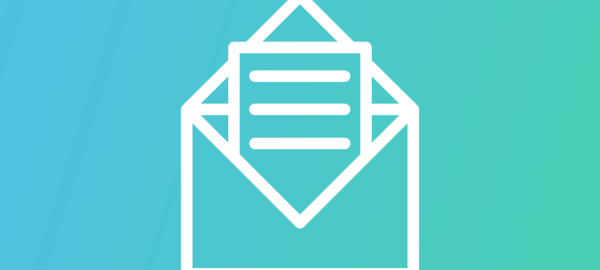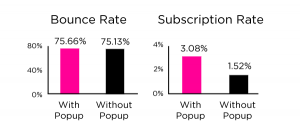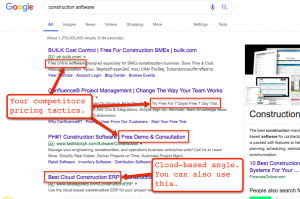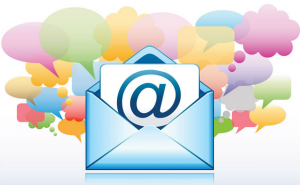— August 8, 2019

raphaelsilva / Pixabay
While e-commerce has grown in the past decade, abandonment remains a major issue for online retailers. Case in point: 77% of all online shoppers abandoned their carts in 2017.
For that reason, a well-executed abandonment email strategy is essential for any ecommerce business.
Email remarketing is the process of contacting a lost lead and reintroducing them to the conversion funnel. While there are numerous ways to accomplish this, emails have remained one of the most effective methods for recovering sales.
But how exactly should an abandonment email strategy be organized? In this article we’ll examine best practices for abandonment emails, and the ways they can drastically improve your conversion rates.
The Standard 3 Email Drip
Persistence is vital in a successful abandonment email strategy. While some users may convert after the first email, a series of 3 personalized emails tends to have the highest success rate. By sending 3 messages, you maintain consistent contact that keeps you top of mind without driving unsubscription rates.
There are several reasons to send more than one abandonment email.
- Customers receive an average of 88 emails per day. It’s entirely possible your first (and even second) email may get lost in the shuffle.
- Many customers may see an abandonment email, then become sidetracked. Sending multiple emails serves as a reminder to those customers and keeps your brand top of mind.
- Customers often need to consider a purchase several times before acting. By sending emails, you prompt repeated consideration and drive browsers to become buyers.
While it’s worth noting that each email in a series serves the distinct purpose of recovering sales, smaller traffic segments, i.e. low converting locales, may make sending three emails ineffective.
Let’s take a look at all three emails in a standard abandonment email strategy and the importance of each.
The Purpose of the First Email: Continuing the Conversation
Your first abandonment email should go out about an hour after a shopper leaves your site.
If you wait too long to send your first post-abandonment email, you run the risk of becoming a fleeting thought in your shoppers’ minds. In fact, sending your first abandonment email within 1-2 hours generates 105% more revenue than the same email sent 24 hours after abandonment.
While you may be tempted to send the first email within seconds, this can actually become counterproductive. If a customer simply navigates away for a moment with plans to return, the immediate contact may register as spam in the shopper’s mind.
Your email’s subject lines should match the intent of the email. You can also learn more about creating the perfect preheader here. Sending messages containing the cart contents left behind by a shopper is a great way to nudge customers back to your site. If you’re offering shoppers an incentive to return, make it clear in the subject line. This can boost open rates, recovery rates, and overall campaign performance.
The Purpose of the Second Email: Sending a Reminder
When sending a second email, it’s best to give the customer a chance to respond before sending out the next message. In general, it’s best to wait at least 24 hours before sending a second abandonment email. When a second email is sent 24 hours after abandonment, conversion rates can reach as high as 17%.
The second email should serve as a reiteration of the original message. Since it’s entirely possible that the shopper missed your first message, it’s ok to assume they’re receiving information they haven’t already seen. That being said, you don’t want the email to be a carbon copy of the original.
Strike a tone that indicates their cart contents or an offer will soon become unavailable. If an incentive is provided, adding information about approaching expiration is an effective way to get shoppers back along the conversion path.
The Purpose of the Third Email: Inciting Urgency With a “Last Chance”
Although the third and final email is often the lowest-performing, it’s still responsible for a significant number of conversions. A study from Rejoiner found that 23% of post-abandonment conversions resulted from the last email in the series.
If possible, send the third and final email in the series 72 hours after abandonment. Waiting for this length of time makes it likely that they’ve seen your email and are familiar with the offer.
For a subject line, an excellent word try to use the word “expire”. If you’re using an incentive, tell the visitor their “offer is about to expire.” This can get last minute shoppers to purchase with a discount while they still can.
While urgency can unquestionably work, avoid overplaying your hand. Unless your offer will truly never meet their inbox again, don’t exaggerate the importance of the offer. This not only makes a brand seem desperate, it makes the user more likely to unsubscribe from future emails.
Furthermore, remember not to antagonize the customer for not acting. While a non-converting shopper is frustrating, remember to keep a pleasant tone even as you invoke urgency. This is supposed to be a friendly reminder – not a dire warning.
Sending Three Emails Creates a Foundation for Success
When it comes to abandonment email campaigns, 3 really is a magic number. A successful abandonment email campaign will have an overall conversion rate of 20-30%, though highly successful campaigns can top 40%. In addition to boosting conversion rates, three-pronged abandonment email campaigns have the capacity to raise average order value and improve customer lifetime value.
By sending a series of strategically planned emails rather than just one, you empower your business to more effectively engage customers, continue the conversation, and recover conversions.
Digital & Social Articles on Business 2 Community
(60)






